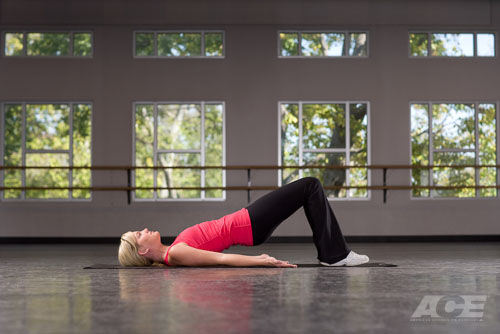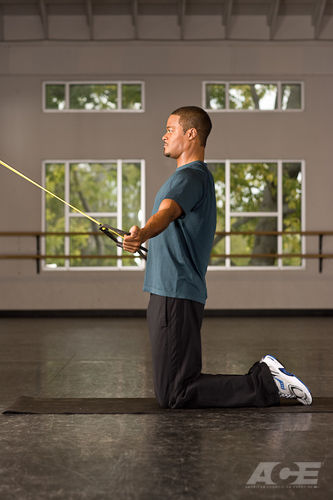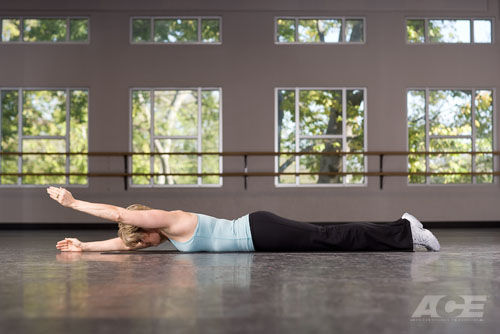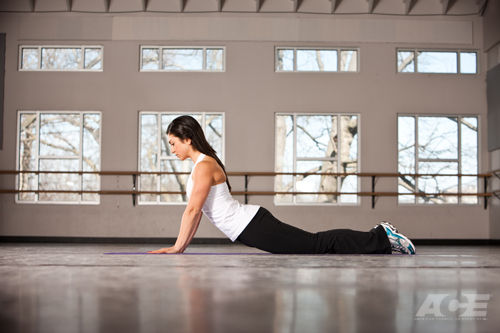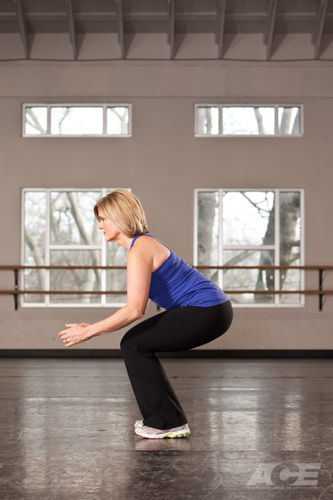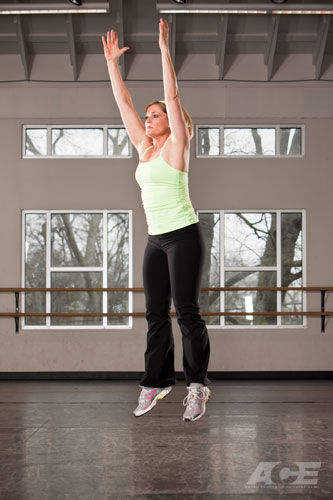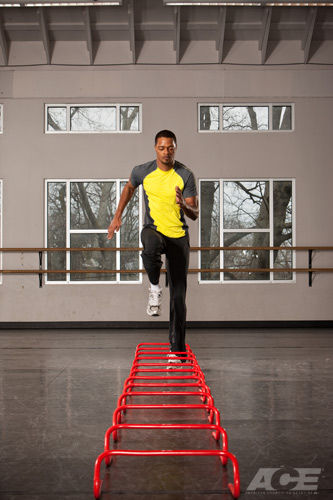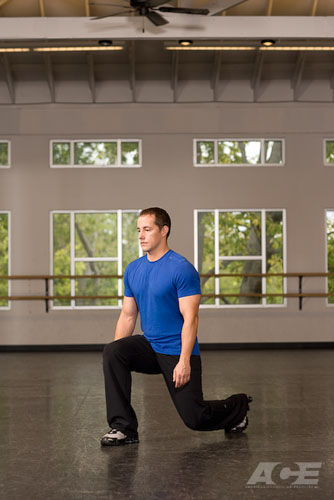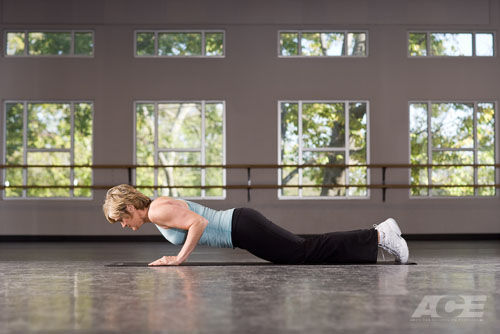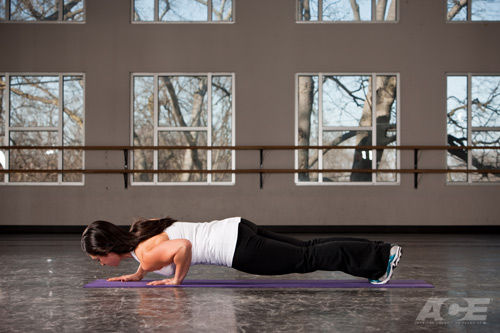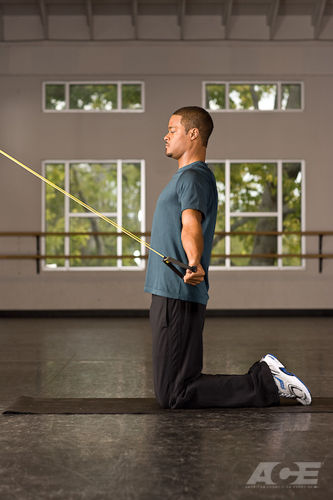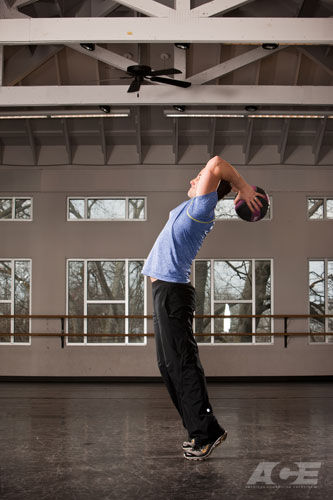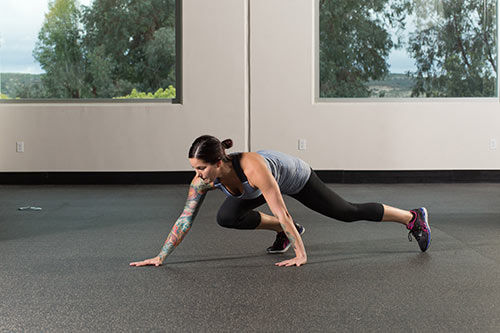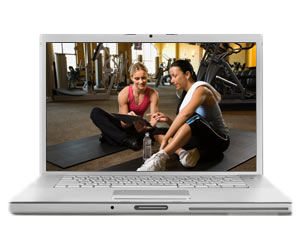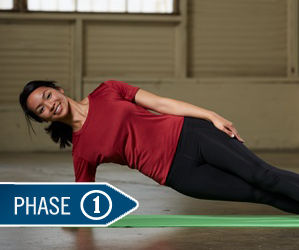
In a previous article, we explored how to use the ACE Integrated Fitness Training® (ACE IFT®) Model to help someone with a sedentary lifestyle establish an exercise habit and get started on the road to better health and an improved quality of life. This time around, we are looking at enabling regular exercisers to progress through the stages of the ACE IFT Model in a way that improves their athletic performance.
Of course, “improving athletic performance” can mean very different things to different people. For a competitive runner, this might involve addressing any movement limitations that may be setting him or her up for a potential injury or limiting speed or endurance. For a soccer player, it may mean introducing high-intensity intervals and agility drills that directly translate to the short sprints and changes of direction needed to excel on the field. For a weekend warrior–type athlete, it may involve improving flexibility and strength in the lower back to help keep injury and fatigue at bay, and developing a plan to get him or her off the couch more often during the week.
Pete McCall, faculty in the Exercise Science Department at Mesa College and ACE Certified Personal Trainer, likes to train clients using the premise that everyone is an athlete.
“Athletics is not confined to the field,” says McCall. “Help clients find their inner athlete and then explore ways to help them improve performance—whatever that means to them.”
The health and fitness professional’s job is to figure out what movement patterns each client needs to perform in his or her daily life, and then help the client improve the ability to perform those movements safely and efficiently.
The Early Sessions
Todd Galati, M.A., ACE’s Senior Director of Science and Research, explains that while the first sessions should include discussion of the client’s athletic goals, you will also need to understand his or her current training program and performance level.
“Only then,” says Galati, “can you look for any gaps in the program and areas in need of improvement.” For example, Galati explains that any limits in range of motion directly correspond to limits in performance, so you should assess stability, mobility and posture across all joints.
The key in the early going with any new clients is to figure out where they stand and where they want to go. Clients with athletic pursuits are no different. Don’t make the mistake of assuming that just because a client has performance goals or calls him- or herself an athlete, the client has a well-rounded exercise routine and is equally fit in all areas. In fact, many athletes excel in their specific sport but are lacking in other elements of fitness. Consider a marathoner who almost never trains for strength, or a power lifter who neglects cardio training.
Functional Movement and Resistance Training
It’s essential to focus on the requirements of the client’s chosen sport or activity. Can the client handle the movement patterns used during participation? This is where the five basic movement patterns described in the ACE IFT Model—bend-and-lift movements, single-leg movements, pushing movements, pulling movements and rotational movements—come into play. If a client is unable to correctly perform a specific movement, range of motion and technique should be addressed before adding other training elements, such as power, strength or agility. Never add external resistance to an inefficient or incomplete movement pattern, as doing so increases the client’s risk of injury.
McCall suggests putting new clients through a short body-weight workout during the initial session. “Don’t assume the client can perform basic movement patterns correctly,” he says. “Have the client perform each of the five basic movement patterns and then progress or regress them as needed, looking for imbalances and weakness.”
For example, if a client cannot perform a full body-weight squat, regress the movement to a hip hinge. If form is good during the squat, progress to a step-up to balance. Doing this for each movement pattern will give you a good sense of the client’s current abilities.
Agility training must be performed only after the client has demonstrated adequate mobility and stability to perform the movements of his or her chosen sport. You don’t want to make the mistake of building on bad form. Even after incorporating more difficult agility drills (if necessary), you should include stability and mobility training during the warm-up and cool-down of an athlete’s workouts.
“Poor postural stability increases the risk for a repetitive use injury,” says Galati. For example, for a golfer, limited hip mobility means that he or she cannot efficiently transfer weight and force from one leg to the other. This results in a situation where hip rotation is limited, so the individual twists more in the spine, which is forced to become more mobile to compensate for the lack of mobility in the hips.
Another great example can be seen in triathletes, who really must excel in three different sports: cycling, running and swimming. Galati explains that competitive cyclists tend to have tight hip flexors and weak hip extensors due to their position on the bike, which places them in a constant state of flexion. The tight hip flexors make running much tougher, as the push-off phase of the running gait relies on powerful hip extension. If this is the case, the athlete may rely on mobility in the lumbar spine to compensate. Triathletes must find a way to balance their performance among the three elements of their sport.
Knowing how to identify and address these types of imbalances is essential when working with clients seeking to improve their athletic performance.
Also, don’t forget to ask clients about any specific issues they may need to address. For example, because cyclists tend to have shortened, tight hip flexors, they also tend to have low-back pain. If you are able to improve overall function by stretching out these trouble spots, you can improve their strength and performance.
McCall recommends simply watching the client move. If you can’t watch the client compete in his or her sport, ask to see some key movements. For example, you might ask a tennis player if you can see his or her form on a backhand and forehand. If you see potential areas of improvement, say so, but be positive: “I see what might help you get where you want to go.”
Break down the movement you want to address. In this example, a tennis swing is a combination of a lunge and a rotation. Start by working on form during lunges and then add rotation with speed and resistance as appropriate.
This is an example of skill training, which McCall says should be higher intensity, with longer recovery or active rest periods. This is in contrast to conditioning sessions, which are not as intense, involve simpler movements and should be focused on keeping the client’s heart rate elevated.
Two sample workouts for improving athletic performance are provided at the end of this article.
Cardiorespiratory Training
When it comes to the Cardiorespiratory Training component of the ACE IFT Model, the thought process is similar to that used in Functional Movement and Resistance Training, explains Galati. You should ask yourself, “Does the client have the endurance to finish the event?” before even considering adding speed training. “Speed is always secondary to endurance,” says Galati.
Consider endurance sports—cycling, running, swimming, rowing crew. Athletes in these sports must be prepared for the distance or duration of their event before they can address the need for increasing their speed or sprinting ability. This requires training in Phase 3: Anaerobic-endurance Training.
Even after the client has the endurance required to compete in his or her sport or event, the majority of training time should be spent performing moderate-intensity exercise. Periodized training programs should include time spent training in Phase 3 as well as Phase 4: Anaerobic-power Training. Keep in mind that the speed/hill training/interval work performed in Phase 4 is very taxing and requires adequate recovery time to be effective.
The warm-up and cool-down should include work below the first ventilatory threshold (VT1), or zone 1 training. It is essential that you educate athletic clients that even though they are seeking enhanced high-level performance, the majority of their training time should be spent exercising below their VT1. Many athletes mistakenly believe they have to “go hard” all the time to continue to improve. This is simply untrue, and potentially dangerous.
The ACE IFT Model utilizes a three-zone model for cardiorespiratory training, which is appropriate for clients performing Phase 3 and Phase 4 workouts.
- Zone 1 training (below VT1): 70 to 80% of training time
- Zone 2 training [from VT1 to just below the second ventilatory threshold (VT2)]: less than 10% of training time
- Zone 3 training (at or above VT2): 10 to 20% of training time
As a client moves from Phase 3 to Phase 4 (either by progressing in their workouts or as part of their periodized program), the primary difference when it comes to this breakdown is the inclusion of anaerobic power intervals at near-maximal effort in Phase 4 training. These should be very short-duration bouts, with long recovery intervals, and should only be performed once or twice each week with at least 48 hours of recovery between workouts.
As with any client, you must consider the specific needs and goals of the individual client. As Galati explains, “The type of high-intensity interval used should be dictated by the event.” For example, cyclists and cross-country skiers must train for hill climbs, while soccer players must train for short bursts of speed in the midst of extensive cardio work.
What if Your Client Is Reluctant to Do Early-stage Training?
Some athletic clients—particularly amateur athletes who have not had professional coaching—may be reluctant to perform Phase 1 and 2 training (stability and mobility/movement training or aerobic-base/aerobic-efficiency training), as they think moderate-intensity exercise is not enough to keep them on top of their game.
“This is where you must strike that delicate balance and use your behavior-change coaching skills,” says Galati. “You can strategically build on what they’re already doing with their training while also addressing their challenges.”
A key issue, and one that every athlete understands, is the need for injury prevention. When it comes to cardiorespiratory training, working too hard too often is a recipe for almost certain overuse injury.
In the Functional Movement and Resistance Training component, McCall points out that alignment, stability and mobility are essential: “You can’t be explosive from a weak foundation.” Movement prep is a key element of any athlete’s training.
Galati and McCall, who were two of the architects of ACE IFT Model, are in full agreement here. “Use your coaching skills to educate them on the importance of a balanced, safe training approach,” says McCall.
Don’t Forget Your Coaching Skills
These clients are more driven than your typical gym-goer. This does not mean that you don’t need to use your coaching skills to keep them on track. While you may have to push your usual clients to show up at the gym and work harder during sessions, the opposite may be true when working with athletes. It’s essential that they understand that “easy days” are absolutely necessary to allow for proper recovery. Athletes often struggle with this. Remind them that they can’t progress their interval training if they haven’t adequately recovered.
If a client begins showing signs of overtraining—increased resting heart rate, disturbed sleep, decreased hunger on multiple days—decrease the frequency or intensity of the client’s intervals and focus more on recovery.
Finally, as Galati reminds us, “never assume that high-performing athletes live balanced lives.” In addition to potential problems allowing for recovery between workouts, athletes have many of the same issues with sleep quality, stress management and nutrition as the rest of us.
The quality of some athletes’ nutritional intake may surprise you. Many athletes train so hard that their poor eating doesn’t show in their physiques. That said, Galati points out that while these individuals may be performing at a high level, they may not be performing at their best.
And that’s where your coaching skills come into play. Remind them that addressing imbalances, keeping injury at bay, eating well, and managing their stress levels and sleep habits are all part of training for improved performance.
Two Sample Workouts for Enhancing Performance
Sabrena Jo, M.S., Senior Exercise Scientist at ACE, created two series of exercises that are appropriate for athletic clients. The first five are Phase 1 movements that can be included in the warm-up or cool-down or used as a means of active recovery. For each of the following exercises, have clients perform five repetitions, holding each for 10 seconds:





 by
by 

